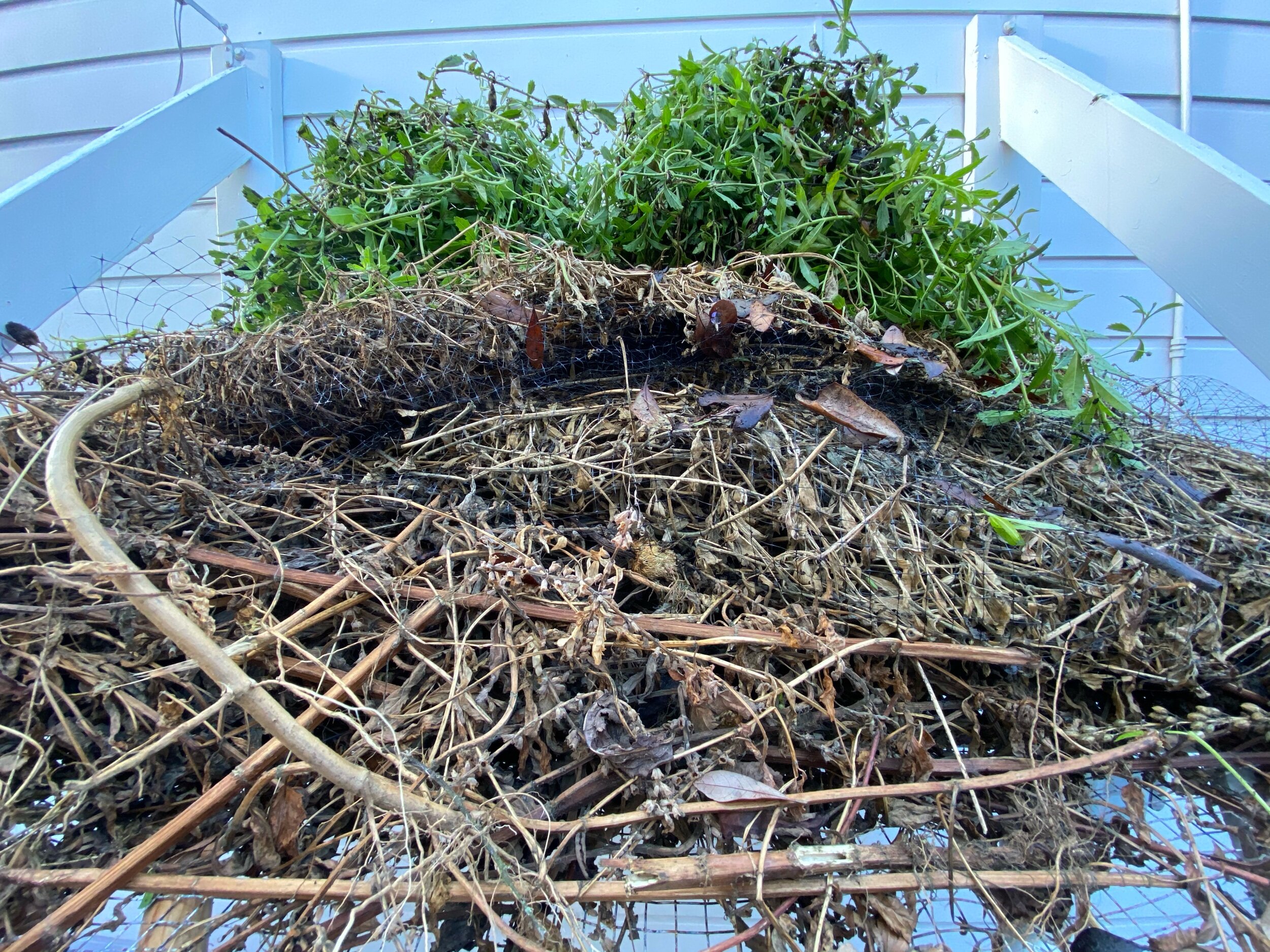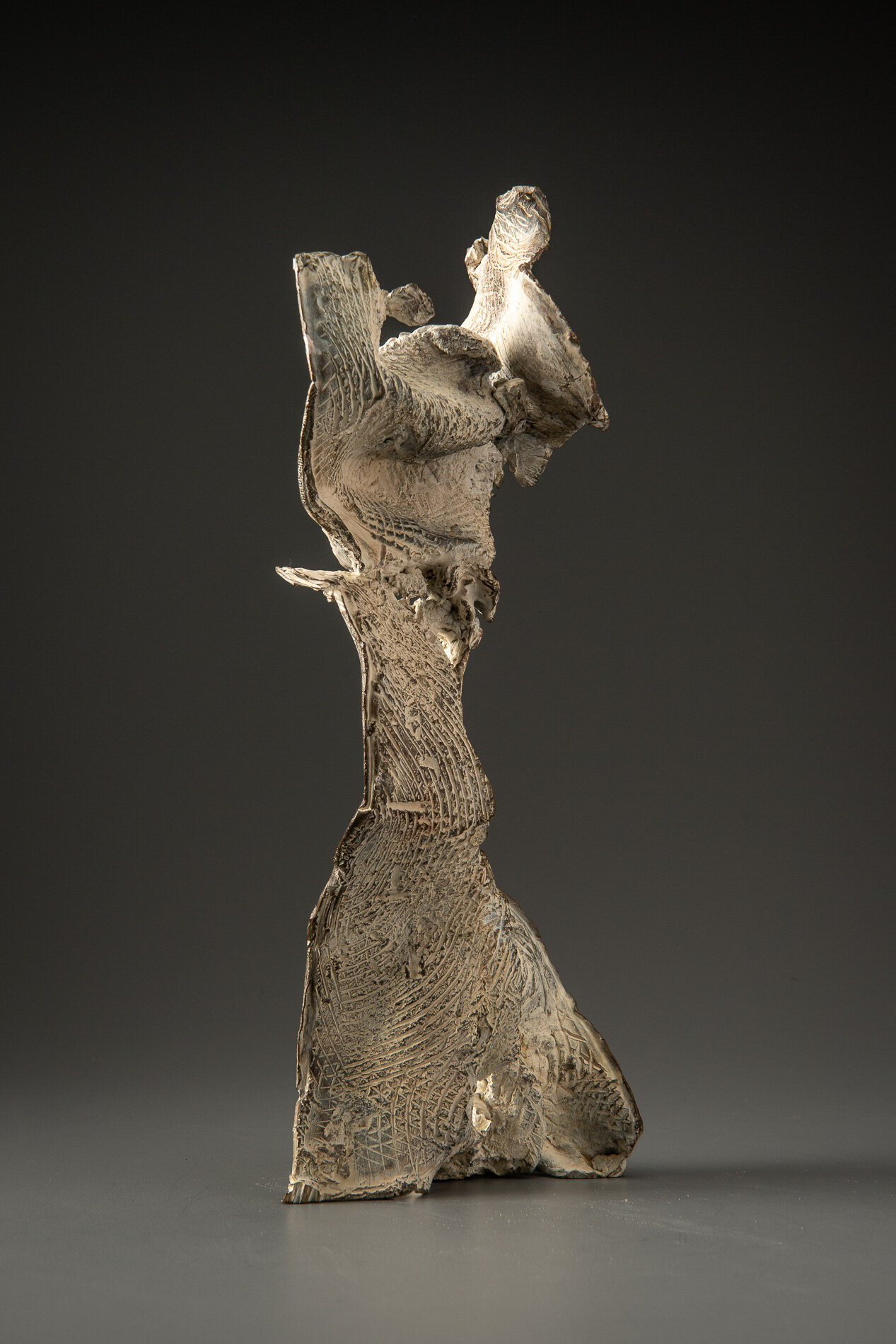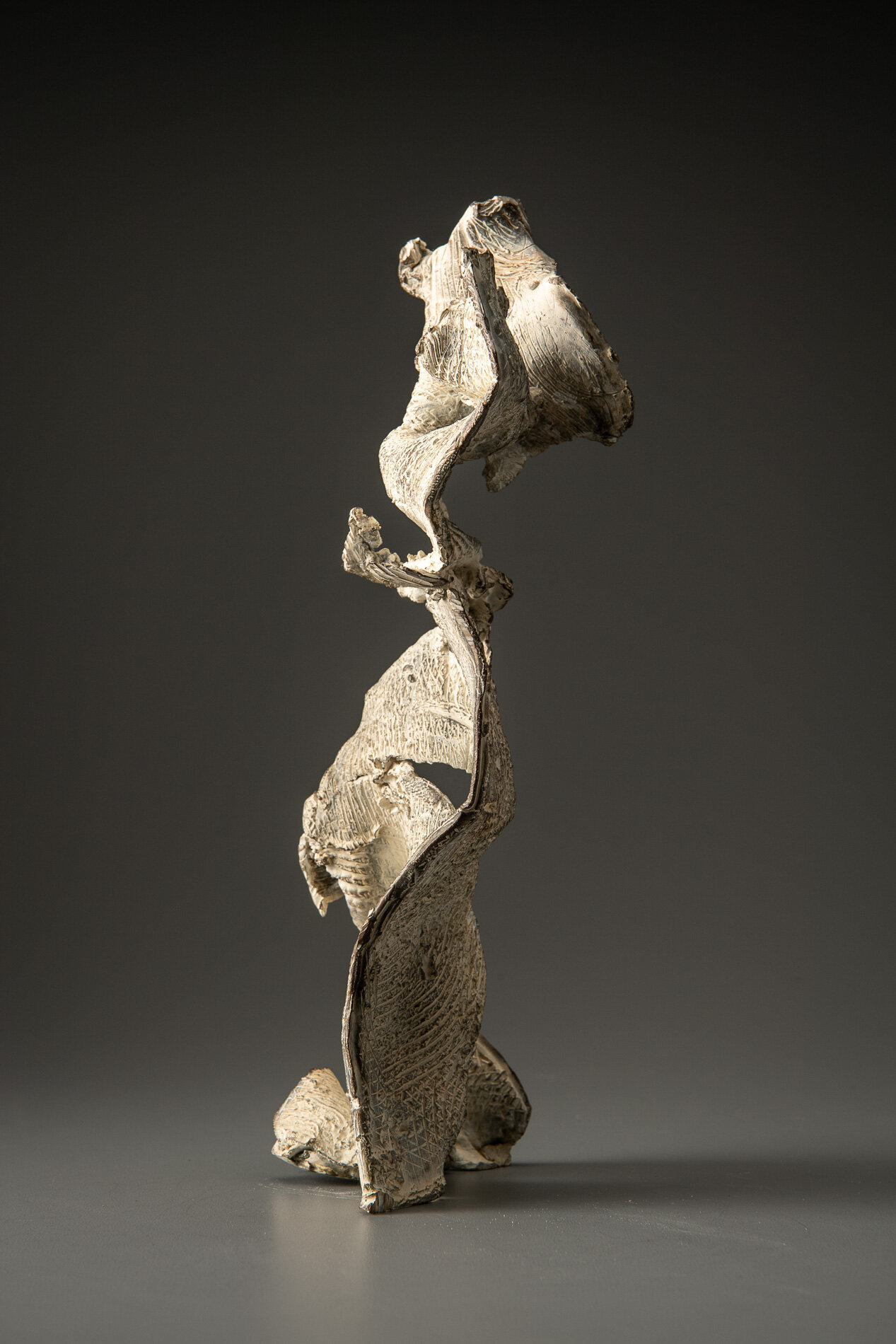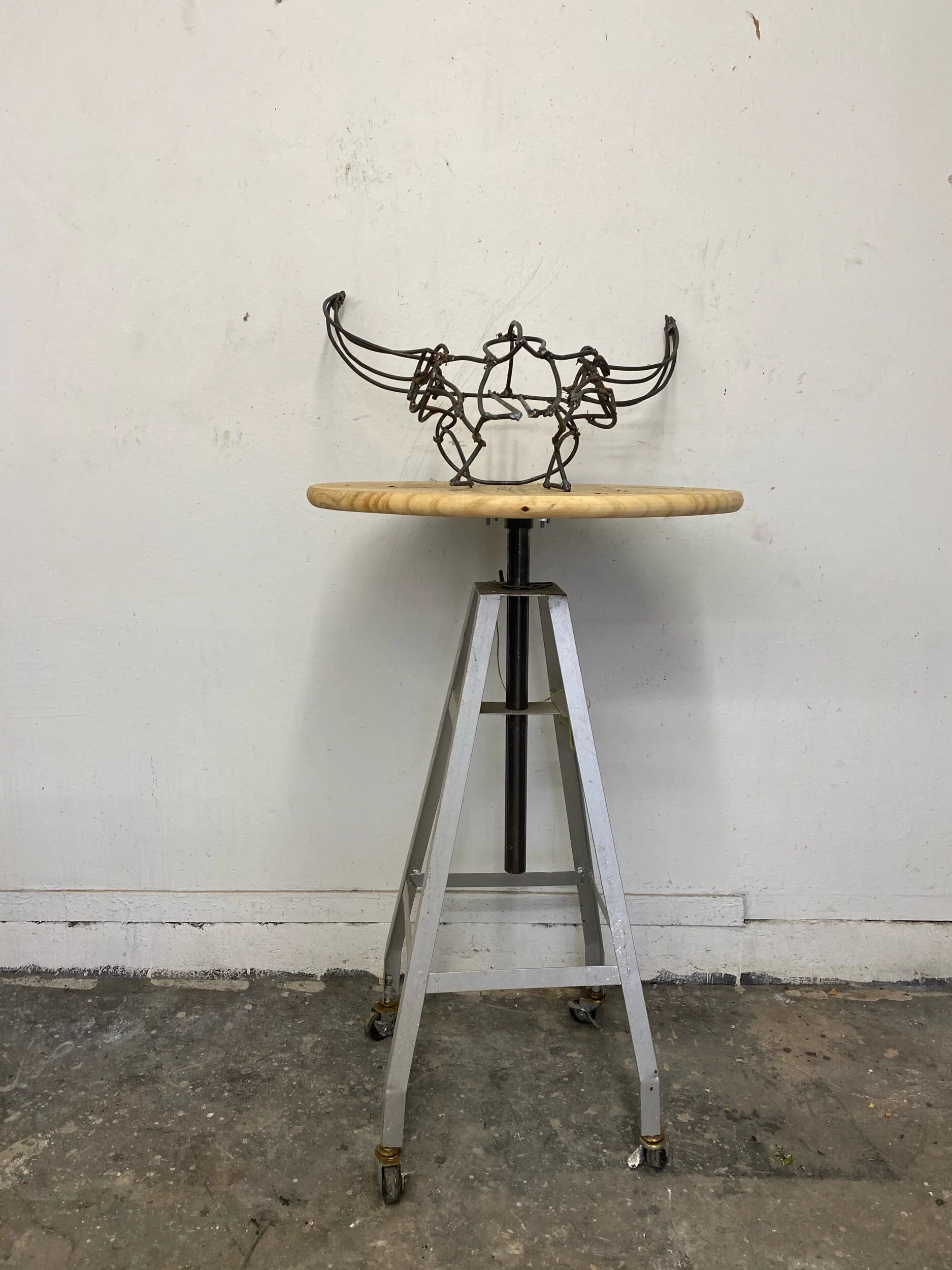Anytime an organization or individual takes notice of my work it is a gift. Thank you Shoutout HTX for supporting me and other local artists.
Army Corps of Engineers study
The Army Corps of Engineers study to reduce flooding risk does not consider utilizing any nature-based solutions. Here is a fascinating discussion of nature-based solutions that will not cost $1 -$12 billion.
“How fleeting are the wishes and efforts of man! How short his time! and consequently how poor will his products be, compared with those accumulated by Nature during whole geological periods.”
—Charles Darwin, Origin of the Species
I was already working on this piece and the artist/activist/conservationist statement that it visually supports. I am excited to get it photographed and out to the public. There is no question that Charles Darwin had it right. Before we spend $12 billion and wreck the Katy Prairie and Buffalo Bayou let’s review a study by bioengineeers.
Lawndale Art Center — Symbiosis environmental art activism project announced
Lawndale Art Center a staple on my radar as a possible venue for an environmental art exhibition. The sculpture garden, primed to be relandscaped in a manner that could communicate any number of environmental issues in my head.
The Lawndale Art Center Sculpture garden before the 2019 re-landscape.
I have had a few casual discussions with Stephanie about these ideas in the past, however other opportunities came my way, and frankly, I dropped the ball.
During the first COVID 19 quarantine, Lawndale Art Center reached out to me regarding their sculpture garden. They were interested to know if I would assist them with some weeding in their newly landscaped sculpture garden, I often volunteer there. When I heard the words, “newly landscaped sculpture garden,” my heart fell to the ground. I had blown it, I missed the best art venue opportunity to create a piece that looks at urban landscape as a found object. I was crushed, disappointed and angry at myself. I decided to focus on my Endangered Knowledge: The Soul of Humus, a piece I am creating for Sculpture Month Houston. In turning Lawndale down I sent them a copy of the proposal I made to SMH. A few days later I remember thinking to myself, “well you blew that opportunity, you will never get a show at Lawndale now.” A few weeks after that— they called me back and asked me to meet them at the sculpture garden. Masked I met with Stephanie and Emily and they asked me to do a site-specific environmental piece in the newly relandscaped garden. It was the last thing I expected—A dream come true was not in my mind of possible COVID19 realities. We also discussed their need for some happiness in the garden. The garden does not have any beneficials planted. Sympathetic to their need for some visual happiness I offered to plant a few flowers.
By this time it is unbearable—Houston—July—Hot.
What can you plant in July and have it not fry, if anything? I am not an experienced gardener I am an artist/activist and a citizen environmentalist—but my friend and past President of the Harris County Master Gardeners, artist, and curator is a very knowledgable gardener. A super busy Renassaince man, Will Isbell kindly offered to meet me on a Friday evening at the garden to see if there was anything I could plant that would not die in this July heat. There was not, but we did have a great talk.
We both saw the existing garden in the same way a missed opportunity for an environmental artist. And then it hit me. I suggested that I propose to Lawndale that the two of us do a project that takes the existing new traditional landscaped garden and use it as a found object to create a piece to activate change in Houston’s landscape. Will did not hesitate.
The question was how do I get them on board. They have already spent good money and the garden by any standards is beautifully done. One thing everyone knows about Lawndale, it is an art space for the voices of artists breaking boundaries and unearthing contemporary knowledge, nothing is too daring for Lawndale. They are the space in Houston to open minds. They were encouraging and interested in this new idea and wanted me to continue working on a concept for a solo environmental piece as well the piece with Will.
I am still num with these two opportunities and excited with the potential to instill hope and heal the environment.
Lawndale announced the project Will and I are doing together last week. Below is the proposal for the work. I wrote it in early July, as I read the opening paragraph today, with California on fire, and Houston flooding again I am taken back by how much the world has changed since I wrote it.— and not in a good way.
Lawndale Sculpture Garden Proposal
Cindee Travis Klement and William Isbell
What is to be gained in the year 2020, the year of perfect vision? In our largest cities, a tiny virus is killing our most vulnerable, crippling our strongest economies, forcing our families into food lines, and providing kindling for social reform protests. In the natural world tucked within our largest cities, this same tiny virus has improved the air that we breathe, returned fireflies to our summer nights, and allowed wildlife to inhabit our neighborhoods. The connection between the land, plants, mankind, and wildlife in urban environments has never been more evident.
What is to be gained in the COVID 19 moment of enlightenment: our eyes have opened to the state of our living systems, and we have discovered that unimaginable change is possible. We have seen that we cannot wait for the tests to tell us if we are sick. Without design, we have found an unprecedented moment, we have gained an opportunity to change.
SYMBIOSIS
As visual artists and art activists, we will connect soil health and the health of our city. We will create a living piece of site-specific art activism that will reimagine the urban landscape and answer the question — how do we holistically restore an ecological balance that can coexist in Houston with nature/ wildlife through sculpture and community involvement. We see the Mary E. Bawden Sculpture Garden's terrain with its manicured, status quo landscape as our found object. With ordinary tools, organic matter, with the help of the community, we will sculpt it into the armor that historically protected Houston’s geological epidermis and gave life to its keystone species — the Coastal Prairie ecosystem. The title of this found object sculpture is Symbiosis. Over time Symbiosis we will morph into not only a landscape but also a soundscape that changes kinetically with the seasons.
Lawndale’s Mary E. Bawden Sculpture Garden’s Symbiosis will be a catalyst for change. In addition, it will be functional as a contemporary art exhibition space, a piece of functional activist art as well as a healthy ecosystem/habitat: a sculpture garden that heals and honors the history of the land.
Physical Description of Piece
Once the parameters of the project more are specifically defined we will insert the specific plants, their ecological roll in the
design and define the work.
Environmental Impact
Soil scientists around the globe agree that solutions to global warming, soil erosion, water runoff, drought/flooding, loss of wildlife habitats, and species extinction are rooted in the treatment of our soil — the skin that covers our planet, which includes our residential and small business landscapes.
Restoring the native prairie vegetation increases soil absorption of water and slows floodwaters on land, decreasing water runoff. For every 1% increase per acre of biological organic material, the soil can hold an additional 20,000 gallons of water. Given Houston’s extreme building practices and concrete hardscaping, reimagining the landscapes within Houston's 600 square miles of real estate can significantly impact the region's flooding. In addition, the roots of vegetation in a coastal prairie can extend from eight to fourteen feet deep; these roots sequester and store carbon like an upside-down rainforest, cleaning our air.
Value of Location
Change can happen at lightning speed when innovation is coupled with imitation.
The current state of Lawndale's sculpture garden provides the perfect opportunity to break the mindless conformity that dominates Houston's urban gardens/yards. The sculpture garden has the feel of a perfectly manicured, traditional front yard, making its size and plant selections relatable to the general public.
With the Houston Arboretum transformations, Katy Prairie Conservancy, Buffalo Bayou, and the new Memorial Park renovation, Houstonians have awakened to the importance of native Coastal Prairie landscaping; however, those sites are enormous tracts of land. It isn't easy to visualize those landscapes outside the parks. This permanent and living metamorphosis of Lawndale’s Symbiosis will provide the 2020 vision of transformation by imitation for yards throughout Houston. It will shift mindsets by prompting Houstonians to question Houston’s urban landscaping and imagine a holistic Houston that protects the environment by balancing human, natural and economic systems.
Value for Lawndale Art Center
An art institution that looks at its community holistically to include not just a monoculture of humans but also beneficial plants, animals, and micro-organisms will be groundbreaking. Symbiosis will cultivate a medley of life that historically has defined the place, has impacted its economy and attracted its people. Lawndale’s Symbiosis will leverage this endangered knowledge with a living site-specific art installation that provides the artistic vision that changes hearts and minds. It will connect the history of the land to contemporary art. Using additive and subtractive sculpting techniques and nature the Symbiosis of the Mary E. Bawden sculpture garden will become a living love letter from our past to our future.
Ecological impact of Houston
With 2.3 million people living on a footprint of 600 square miles, close to the Gulf of Mexico, located along the migratory bird pathway, Houston is an urban wildlife sanctuary.
Changing Houston's ecology will profoundly impact our oceans, human life, wildlife, and microbial environmental health. Let’s not miss this unprecedented opportunity and heal the skin of the planet and our people.
Installation Process
The beauty of this piece is to have it be a catalyst for inspiring homeowners and businesses to imitate the change and heal their landscapes too. We will Involve the community to take on an active role in the transformation. Installation of the piece will engage and educate the community in ways to be defined after specifics of the piece are worked out.
Lawndale after one of our early Symbiosis meetings.
Beautiful new fence and Jasmine and crepe Myrtles.
Olive trees, African Iris, Dwarf Yupon Holly, Gardenias, Asian Jasmine, Crepe Myrtles -6 very popular landscape elements across Houston.
Will’s and my found object — Lawndale Art Center, Mary E. Bawden Sculpture Garden
Endangered knowledge: The Soul of Humus #17 Cowbirds
I just read an intesting article; how Cowbirds are hedging their bets when choosing surrogate birds to hatch and raise their young. Another instance that supports the theory that diversity is the ticket when it comes to the survival of a species.
Coincidently I picked up the bronze Cowbirds yesterday. They are ready for me to recreate the texture where they were damaged during the spruing process. Once that is complete I will deal with their patina. I should wait and decide on their finish once the abstract bison is further developed. That said I am excited to see how the materials will look in a polished finish. Below are closeups of each bird - just for the record.
The finishes are very powdery looking and flat because they were just sandblasted. When I decide on the patiba the textures will really show up.
I took a risk when I decided on the manner in which I would create the birds. The Cowbirds are constructed in a primitive manner. And they look extra primitive laying on the faux bois chair. Context impacts the way we see. I feel hopeful the organic and rough construction will work on the abstract beast they will be attached to. Roughly constructed they support the story, polished perfectly detailed birds would not relay their connection to the geography and mammals. I realize I have not taken the safe root and hope I didn’t need to hedge my by as the Cowbirds did theirs.
The big bird side 1
Opposite side.
On this image you can see a smooth surface from where the sprue was cur off. One spots the I will retexture.
From the top
Bird 2
Bird 3
Derail shot of bird 3 - you can see the seeds and grass stems.
Bird 4
As I recall this one gas some bluebonbet seeds in it's back feathers.
Bird 5
Texture gives me good goosebumps.
Endangered Knowledge: The Soul of Humus #16
Art/computer work that has interfered with my welding but I never miss an opportunity to collect native plants. I have converted an old kayak rack into a plant drying rack. Stacking up and drying out.
Drying native grasses
what we think we become
I started this piece 1 1/2 years ago but neglected to have it photographed until this week. Seeing it through the photographer’s eye, it has an additional layer of meaning in 8/2020.
Originally it was a maquette for a memorial piece. We ended up going a different path for the memoriam. Personally I was happy this piece emerged from the event and cast it in bronze. It resonates with me because years ago I became fascinated, completely sucked in by modern neurology. Neurology was my obsession. I read everything a Mom could get her hands on. My favorite was Phantoms in the Brain by V. S. Ramachandran. The brain is amazing and especially since neurologists have learned that it is plastic and is changed with everything you do, everything you tell yourself or others tell you changes your brain. This knowledge is what gives every human a chance for hope. Dreaming is the first step, and self-talk is hugely important. You can control how you see the world, and how you see yourself, “fake it until you make it works“. What you think you will become”.
The additional layer - living through a pandemic is choosing how one reacts to stressful and depressing situations. Humans choose how we react and how we see. “what you think you will become”. The texture of the piece is composed of repetitive arched lines, they are mirrored in the profiles/contours of the work. It is an abstract sculpture but I clearly read “what we think we become”. What we look for we will find, 8/2020 is a good time to control your thoughts and look for the light. If you look for it you will find it.
“what you think you become”
bronze
12” X 4” X 3”
Working style philosophy
Range by David Epstein - in my mind is a must-read for any artist, creative writer, inventor, scientist moms or anyone who solves problems.
https://pepperdine-graphic.com/book-review-lessons-for-higher-education-in-david-epsteins-range/
”Everyone needs habits of mind that dance across disciplines.”
- D. Epstein
“Habits of mind that dance across disciplines-“ - D. Epstein
I love that quote; it sums up how I think and supports how I am driven to work. Several times during studio visits with people that are in the art world and that I have tremendous respect for, they advised me that I should focus on one thing, one media to work in, or one subject. It helps in branding. It also allows for intense and thorough investigations in an area. It is a smart way to go. I understand what they are saying. It is a lot easier to market art made out of one media or maybe two different medias. It allows you to be recognized by the work.
If I were 20 years old and created art for financial gain- to eat and pay my rent, I would 100% take the advice. Since I am 63 years old and after years of working long hours (not in a visual field), I now have the luxury of knowing where my next meal is coming. Branding is smart, but it is not what interests me about making art. The creativity, the making of, and the message of are what inspire me. The freedom to be creative and not have to worry about the marketability, durability, or popularity of size, material and color allows me to do work that is important to me, with materials that speak to the issues that keep me up at night or move me. It is a luxury not to have financial pressures. Having this luxury, I feel responsible for using the freedom I am afforded to do work that will help create a better world. It does not mean I can’t have fun with it. I love making and feeling passionate.
I have many interests, and I try to be open to new ideas. I believe creativity comes with exposure to life’s experiences, both good and bad, and life’s failures. I often try to break the rules set out by those who came before me regarding creating, and looking for new ways to find my voice. It comes from the willingness to try new things, ”to grasp further than my reach.” -Browning?
Every new idea I have, I first think if it should be expressed 2D or 3D or both. I have to consider the problems that will arise. I have to look far enough to solve the next problem, but not so far ahead that it is daunting. That is a fine line. Reading Range confirmed my beliefs and uncovered even more justifications for staying focused on my path of diversity. . There are connections in my creative wanderings, they are not as visible as using one media or one subject, but they are there for those that take the time to look and think. Good or bad, this is how I need to create. Maybe someday, but for now, I do not want to shift my mindset. I want to keep expanding my visual and sculptural vocabulary. I want to look for ways to interleave my work, create more mental schemes, broaden my thinking, think outside my experiences.
I am naive enough to hope that one-day, art historians, and or critics will see the connections in my work and maybe be glad I didn’t do one thing. Until then I have to figure out where to keep all this work.
Endangered Knowledge: The Soul of Humus #15
Another day of building the bone structure of the face. The armature is more detailed than the sculpture will be. As I work I remind myself that the armature just needs to support the masses of dried mud and dried grass. It will not be visible under the herbaceous skin. I can’t seem to stop myself. I think it make me feel closer, more connect to the bison.
It also keeps me away from the news- COVID 19.
Today I worked on the lower part of it's cheekbones and then I added a rear jawbone.
Looking up the mouth and nose of head minus the lower jaw.
The old guys face left side
Looking through the skull
The right profile.
Endangered Knowledge: Soul of Humus #17
I started the lower jaw today. I spent the majority of the day researching the structure of the lower jaw and its movement as the bison chew.
Here is a collection of my reference material.
Bison grab a tuft of grass with their tongue, then they pinch it off by pressing it between their tongue and their front lower teeth. They do not have top front teeth. They then swallow it whole. That is the beginning of a 24-hour digestive process.
I love this image, I took it last January at Roam Ranch right before the roundup. I think this is the one they call Poppy. Poppy is very curious and friendly. She is checking me out as she catches rain drops on her tongue.
You can see the lower jaw through the upper jaw here. It is slightly off to the right of the bison. I want him chewing away and want to exaggerate the movement. I will probably bend it a little more askew this weekend.
Here the chewing lower jaw is more obvious.
View from the rear or top down.
Friday, I am committing to writing the Lawndale proposal- rewriting and rewriting and rewriting.
Endangered Knowledge: The Soul of Humus #14
I am getting close to finishing the head and upper jaw. The next step will be to create the lower jaw, then I will put the head aside and start building up the piece from the hooves.
More work on the cheekbones and connecting the horns to the eyes.
Side view of armature
Bottom side view
Bison's left side view
Back of head looking down
For the full story see Endangered Knowledge: The Soul of Humus #1a


















































